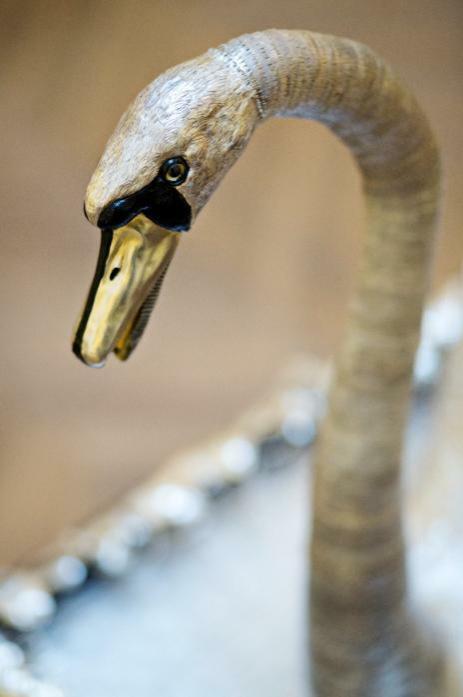
THE Bowes Museum’s iconic 250-year-old, life-sized Silver Swan, resumed daily performances this week after being static since 2020.
It marks the end of a major restoration and conservation project consisting of 1,500 hours of painstaking and skilled work by horology experts from The Cumbria Clock Company. They were assisted by clock interns from West Dean College in Sussex and Birmingham School of Jewellery along with the museum’s in-house conservation team.
The swan is a solid silver replica of a female mute swan and one of the finest examples of 18th century automata in the world. Seen by museum founders John and Josephine Bowes in the Paris International Exhibition of 1867, they bought her for £200 five years later.
The swan, which was made in London in 1773, has three clockwork motors and more than 2,000 moving parts. It is being operated every day at 2pm at the museum in Barnard Castle.
Visitors have been able to observe much of the restoration and conservation work being carried out in the Silver Swan gallery.
Keith Scobie-Youngs, director of The Cumbria Clock Company said: “It’s been a real privilege to work on such a historic object as the Silver Swan that means such a great deal to so many people.
“It’s been incredible to get an insight into the workings of the clock-makers of the past and see how so many of the skills they possessed are still relevant today. To have been able to pass on that knowledge to a new generation of clockmakers and horologists has been incredibly humbling.”
Victoria Franka was appointed Silver Swan artist in residence while the conservation work was taking place. The multi-disciplinary mixed media artist, led ten workshops during her residency, where she shared her skills and expertise with visitors.
The work she created, which includes two macrame wall hangings, a 3D printed wallhanging and a zoetrope (spinning animation) can also been seen in the Silver Swan gallery.
The conservation project was funded by a grant of £146,324, from The National Lottery Heritage Fund, money from the Friends of The Bowes Museum, the Leche Trust, the Aurelius Charitable Trust, the Circle of Arts and the generosity of people who gave £20,375 to a crowdfunding campaign as well as private donors.





